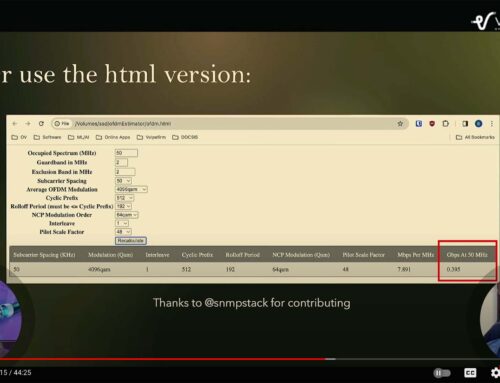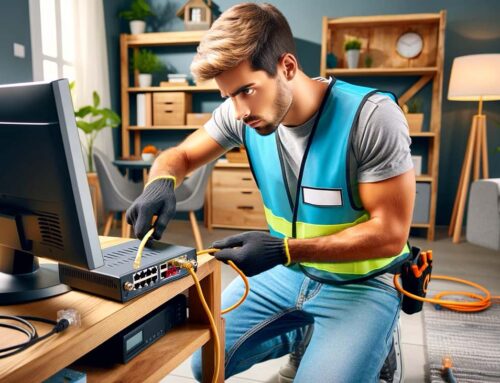Podcast: Play in new window | Download | Embed
Subscribe: Spotify | Email | RSS | More
Distributed Access Architecture Pros and Cons for cable operators
Hello Everyone. This is episode 53 of Get Your Tech On, our show on All Things DOCSIS. I’m Brady Volpe, Founder of The Volpe Firm and Nimble This. With us is, John Downey, in the flesh. John is also CMTS Technical Leader at Cisco Systems, welcome John.
Today we are going to discuss DAA Pros and Cons.
But First Question from Watcher:
Love the podcast, so thanks! Secondly, as we know DOCSIS 1.1 introduced BPI+ in 2001. Well the certificates to support that are only good for 20 years and then they expire, and then CMTS rejects the devices registration. Well in two years we’ll be hitting that threshold and as sad as it is to say, many MSOs still have those legacy devices on their networks. Just thought it would be an interesting topic for what the industry as whole might have to do to counter this measure.
Answer: Cablelabs has made an application and Cisco is addressing it in their CMTS. Cisco is adding a global commend and is working on it. Allow OUI. Allow certain devices to work. But it might also be a push to remove older modems from the network. Cable Modems will no longer work.
CableLabs is developing a software application for Cable Operators and identify expiring Cable Modems.
BPI+ is critical for the security of the modem to help prevent hacking or cloning of the cable modem.
In the News:
How Telecoms are Leveraging 5G to Attract Gamers
Low latency DOCSIS and gaming — a billion dollar industry we cannot ignore https://broadbandlibrary.com/how-telecoms-are-leveraging-5g-to-attract-gamers/
Or on my blog page here by Brady Volpe
– Low Latency DOCSIS
– Gaming
AT&T’s next 5G network is going live in December, but don’t expect big jumps in speed: https://www.cnet.com/news/at-ts-next-5g-network-is-going-live-in-december-but-dont-expect-big-jumps-in-speed/
THE LIMITS OF 5G —
Verizon’s new 5G coverage maps show just how sparse the network ishttps://arstechnica.com/information-technology/2019/11/verizons-new-5g-coverage-maps-show-just-how-sparse-the-network-is/
AT&T, Verizon Begin Land Grabbing for Flashy 5G Partnershipshttps://www.lightreading.com/mobile/5g/atandt-verizon-begin-land-grabbing-for-flashy-5g-partnerships/d/d-id/755849?
Topics covered:
- BPI+ expiring – next steps
- DOCSIS Low Latency for Gaming – Low Latency DOCSIS
- In the News
- 5G Telecoms
- 5G cells using coax as a backhaul – LLX
- 5G partnerships
- 5G more options for cable operators to provide services
- DAA Distributed Access Architecture challenges
- Analog fiber to digital fiber
- All analog needs to go away
- If all digital it means in QAM or OFDM, all customer equipment needs to support it
- Old Test equipment needs to support all of it, legacy test systems become obsolete. Legacy Sweep becomes obsolete.
- Alternative is remote pay shelf – can keep some analog
- Remote pay node
- Digital fiber distance
- form factor
- Comments from chat
- Test equipment – all virtual, kronback tracers, PNM, sweepless sweep
- Legacy obsolete test equipment
- Bang for the buck with DAA
- Improved distance – 80 km SFP, 3 dBM, the receiver is more sensitive. Loss from hops, splits, 10 hops, 500 km
- EDFA – 200 km with point to point link
- Remove hub sites
- Better performance
- Bandwidth
- 200 MHz with digital laser
- Old analog laser have laser clipping
- Improved distance – 80 km SFP, 3 dBM, the receiver is more sensitive. Loss from hops, splits, 10 hops, 500 km
- Invest in Remote PHY is an investment in your future
- More systematical network
- Radically different network
- Removal of duplex filters
- Remote PHY is the first step to virtualizing your network – cloud
- FMA, mixed solution
- DAA takes us to the next level where the industry is going
- Reducing cooling, powering, natural disasters resilience
- Capacity planning improvements
- Share resources better
- Orchestration improvements in an virtualized environment
- Aging out industry
- New industry
- Cloud etc
- Extended spectrum 1.8 GHz in the downstream to open up the upstream
- Upsides of DAA is preparing for the future
- SNR / MER improvements
- Big bang for your buck
- No laser clipping
- Reduced headend space
- Eliminate Hub sites
- Reduce overhead utilities
- More flexible to manage capacity, orchestration
- Digital fiber combine in time domain to increase
- 10 x 10G to get 100
- add in phase
- RF cannot do that – there is phase
- Amplification of node
- Stepping stone to cloud (where everything is going)
- 204 upstream – cable modem
End Podcast
John thank you for your time today. This was a great episode. Our next Episode 54 in December.
We do our best to bring our audience great technical content every month. You can watch us live on the air or catch our recorded episodes on YouTube, on our volpefirm.com/events channel or download our audio only version with your favorite podcatcher.
If you have enjoyed this webcast, please do hit the subscribe button so that you never miss an episode.
Thank you so much for being here and we will see you next month.
Upcoming events can be seen under Broadband Events. Previous events can be seen under the blog.
- If you are watching this on youtube please hit the subscribe button!
- Let us know what you think and remember to share!
- You can find slides at the bottom of the page and some on slideshare.
- Find out about events or articles by following us on Twitter, LinkedIn or Facebook too.
Also available on iTunes, Google Podcasts, Spotify, vurbl see podcasts “get your tech on”.





Leave a Reply